
Traian Vuia or Trajan Vuia was a Romanian inventor and aviation pioneer who designed, built and tested the first tractor monoplane. He was the first to demonstrate that a flying machine could rise into the air by running on wheels on an ordinary road. He is credited with a powered hop of 11 m (36 ft) made on March 18, 1906, and he later claimed a powered hop of 24 m (79 ft). Though unsuccessful in sustained flight, Vuia's invention influenced Louis Blériot in designing monoplanes. Later, Vuia also designed helicopters.

Aurel Vlaicu was a Romanian engineer, inventor, airplane constructor and early pilot.

The Etrich Taube, also known by the names of the various later manufacturers who built versions of the type, such as the Rumpler Taube, was a pre-World War I monoplane aircraft. It was the first military aeroplane to be mass-produced in Germany.

The IAR 79 was a twin-engine bomber and military reconnaissance aircraft with a wood and metal structure that saw service in World War II built under licence in Brasov, Romania, by Industria Aeronautică Română
Romania has a rich tradition in aviation. At the beginning of the 20th century, pioneers such as Henri Coandă, Aurel Vlaicu, Traian Vuia and George Valentin Bibescu made important contributions to early aviation history, building revolutionary aeroplanes and contributing to the international scene.

The Northrop XP-56 Black Bullet was a unique prototype fighter interceptor built by the Northrop Corporation. It was one of the most radical of the experimental aircraft built during World War II. Ultimately, it was unsuccessful and did not enter production.

Aurel Vlaicu International Airport is located in Băneasa district, Bucharest, Romania, 8.5 km (5.3 mi) north of the city center. Named after Aurel Vlaicu, a Romanian engineer, inventor, aeroplane constructor, and early pilot, it was Bucharest's only airport until 1969, when the Otopeni Airport was opened to civilian use.
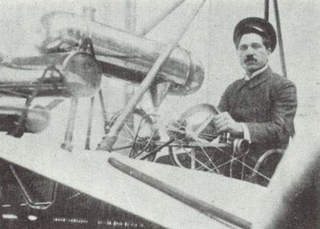
Rodrig Goliescu was a Romanian inventor, engineer, and lieutenant of Polish descent. He designed and built the "Avioplan," the first airplane with a tubular fuselage.
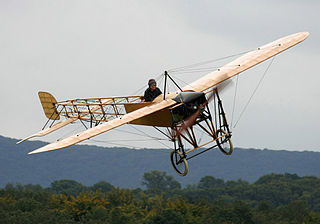
The Blériot XI is a French aircraft from the pioneer era of aviation. The first example was used by Louis Blériot to make the first flight across the English Channel in a heavier-than-air aircraft, on 25 July 1909. This is one of the most famous accomplishments of the pioneer era of aviation, and not only won Blériot a lasting place in history but also assured the future of his aircraft manufacturing business. The event caused a major reappraisal of the importance of aviation; the English newspaper The Daily Express led its story of the flight with the headline "Britain is no longer an Island".

The Klemm Kl 35 is a German sporting and training aeroplane developed as a successor to the Kl 25. A product of Klemm Leichtflugzeugbau Gmbh it shared the same single-engine, cantilever low-wing configuration as the earlier machine, the major difference being the introduction of an inverted gull wing.
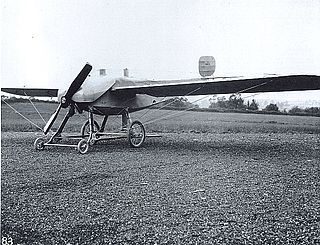
The Bristol Coanda Monoplanes were a series of monoplane trainers designed by the Romanian designer Henri Coandă for the British company British and Colonial Aeroplane Company.

The ICAR Universal was a 1930s Romanian two seat monoplane trainer, touring and aerobatics aircraft.

The IAR CV 11 was a Romanian fighter prototype in 1930, designed by Elie Carafoli, and it was IAR's first original aircraft.

The Zeppelin-Staaken R.XIV was a development of the Zeppelin-Staaken R.VI. This was one of a series of large bombers called Riesenflugzeuge, intended to be less vulnerable than the dirigibles in use at the time.

The IAR-22 was a single engine basic trainer built in Romania in about 1934. It was a low-wing monoplane with two seats in tandem and a fixed conventional undercarriage.
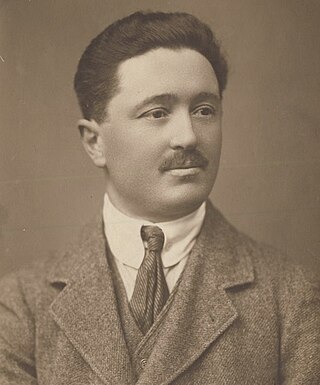
Giovanni Magnani was a Romanian-Italian entrepreneur who lived in Bucharest at the beginning of the 20th century. In 1911 he fabricated a set of propellers for A Vlaicu II airplane, thus becoming the first propeller manufacturer in Southeast Europe.
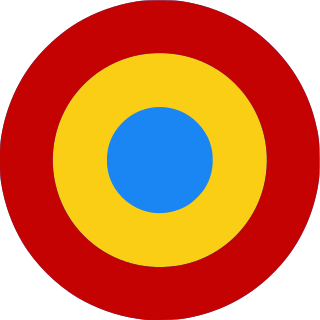
The Romanian Air Corps or Aviation Corps (RAC) was the air arm of the Romanian army until the formation of the Romanian Air Force. It was established on 1 April 1913 as the Military Aeronautics Service and subordinated to the Engineer Inspectorate, being organized in two branches – the aviation and the balloon branch. On 23 August 1915, the RAC was formed as an independent military arm and operated until 1 January 1924 when it became an equal to the Army and Navy, being redesignated as the Royal Romanian Air Force.
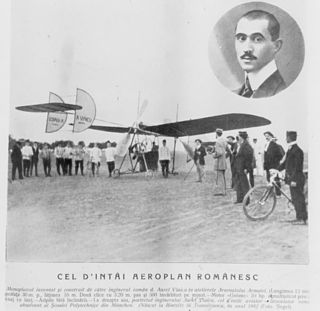
The A Vlaicu I was the first powered airplane built by Aurel Vlaicu.

The A Vlaicu III was the world's first metal-built aircraft, designed and built in Romania prior to World War I. It was the third powered aircraft designed by pioneering Romanian aviator Aurel Vlaicu.

The Caproni Ca.13 was a two-seater single-engine monoplane built by Caproni in the early 1910s.
























